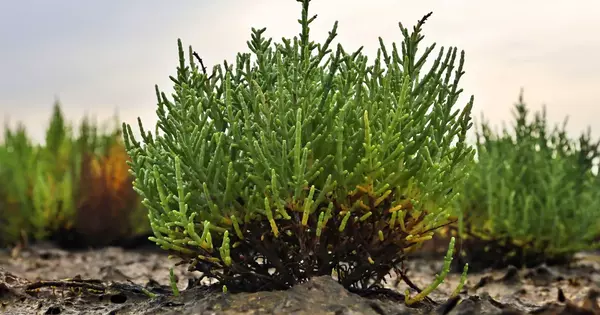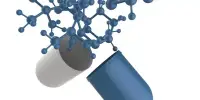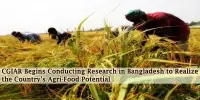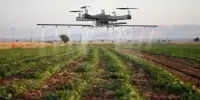Salinity is one of the growing issues causing massive yield losses in many parts of the world, particularly in arid and semiarid areas. To increase crop productivity, these areas should be developed where there are options for removing salinity or growing salt-tolerant crops. Because the use of salt-tolerant crops does not remove the salt, halophytes with the ability to accumulate and exclude salt can be an effective method.
Plants can change their root direction and grow away from saline areas to avoid salt in the soil. Researchers from the University of Copenhagen assisted in determining what makes this possible. The discovery alters our understanding of how plants change shape and growth direction, and it may help alleviate the growing global problem of high soil salinity on farmland.
While a bath in the ultra-salty Dead Sea may be therapeutic for the human soul and body, most plants have an inverse relationship with salt. Plants do everything they can to avoid salinity, as salts can harm and even suffocate them.
Unfortunately, salt in agricultural land is becoming an increasing global problem, owing in part to climate change, which increases soil salinity whenever floods sweep coastal zones. Crop yields are typically reduced as a result of this.
“Crops that can withstand salt are needed around the world. To develop plants that are more salt-tolerant, we must first understand the mechanisms by which they respond to salt “explains Professor Staffan Persson of the Department of Plant and Environmental Sciences at the University of Copenhagen.
He goes on: “Plants can direct their roots away from saline areas to avoid salt in the soil. It is an essential mechanism. It is currently unknown how they accomplish this.”
The discovery that the stress hormone ABA is critical for plants’ ability to reorganize cell walls and change shape and direction of growth is novel. This could pave the way for new directions in plant research, with a greater emphasis on the significant role that the hormone appears to play in plants’ ability to cope with various conditions by changing movement.
Staffan Persson
Together with a group of foreign research colleagues, Persson discovered exactly what happens inside plants at a cellular and molecular level as their roots grow away from salt. The results have been published in the scientific journal Developmental Cell.
Stress hormone comes into play
The research group has discovered that when a plant senses local concentrations of salt, the stress hormone ABA (abscisic acid) is activated in the plant. This hormone then sets a response mechanism into motion.
“The plant has a stress hormone triggered by salt. This hormone causes a reorganization of the tiny protein-based tubes in the cell, called the cytoskeleton. The reorganization then causes the cellulose fibers surrounding the root cells to make a similar rearrangement, forcing the root to twist in such a way that it grows away from the salt,” explains Professor Persson.
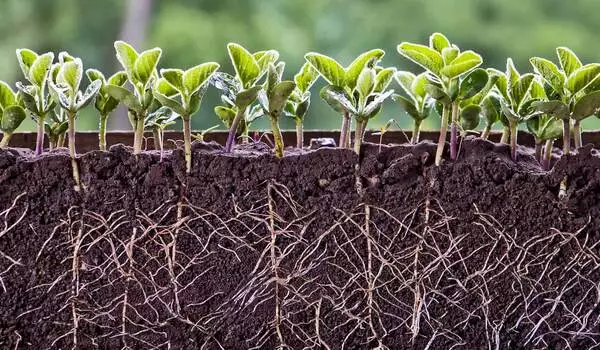
Changes the understanding of how plants change shape
The researchers were taken aback by the discovery due to the stress hormone’s dominant role. Until recently, it was thought that the hormone auxin regulated a plant’s ability to change directions in response to environmental cues (known as tropisms).
“The discovery that the stress hormone ABA is critical for plants’ ability to reorganize cell walls and change shape and direction of growth is novel. This could pave the way for new directions in plant research, with a greater emphasis on the significant role that the hormone appears to play in plants’ ability to cope with various conditions by changing movement” Staffan Persson explains.
The researchers were able to reverse the twist by mutating a single amino acid in a protein that drives the twisting of the root, preventing the plant from growing away from the salt. Persson believes that the new knowledge will take some time to be applied in agriculture, not least because GMOs are still prohibited in the EU. The findings, however, may pave the way for the development of more salt-tolerant crop varieties.
“When plants detect salt, they produce more of the stress hormone. It’s not difficult to imagine that if you can speed up a plant’s stress response by modifying other aspects of its cytoskeleton, you can probably speed up root-twisting as well. In this way, we can strengthen plants by reducing their exposure to salt,” says Professor Persson.
FACTS:
- High salt concentrations in farmland are caused by a variety of factors, including coastal flooding caused by climate change, as well as irrigation, which frequently increases soil salinity.
- The annual cost of irrigated land degradation due to salt is estimated to be around $30 billion USD.
